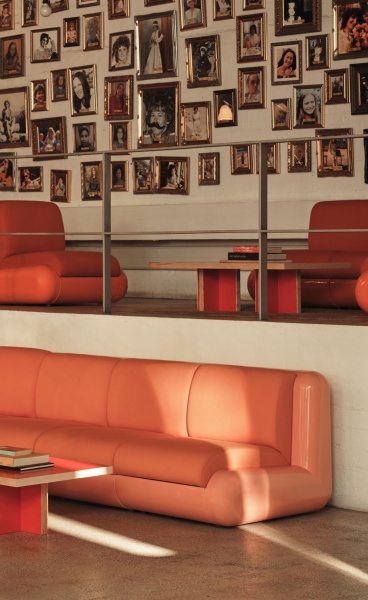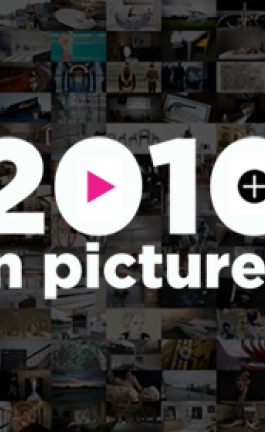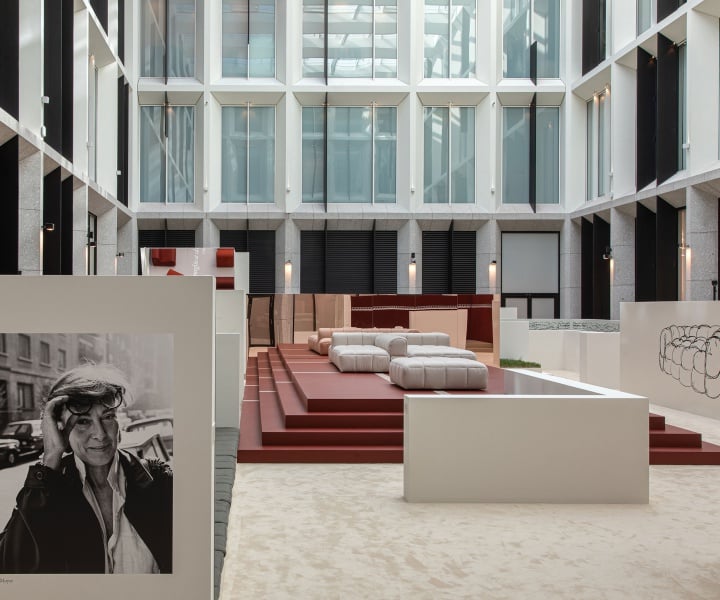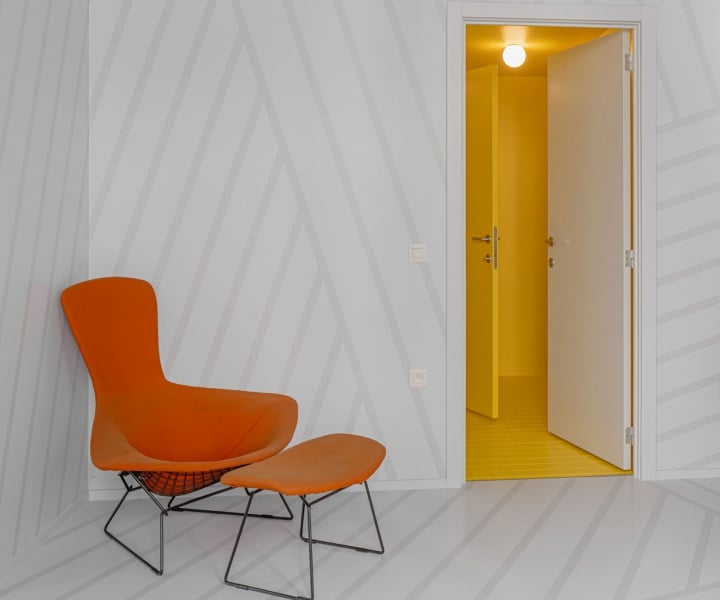photo © Fran Parente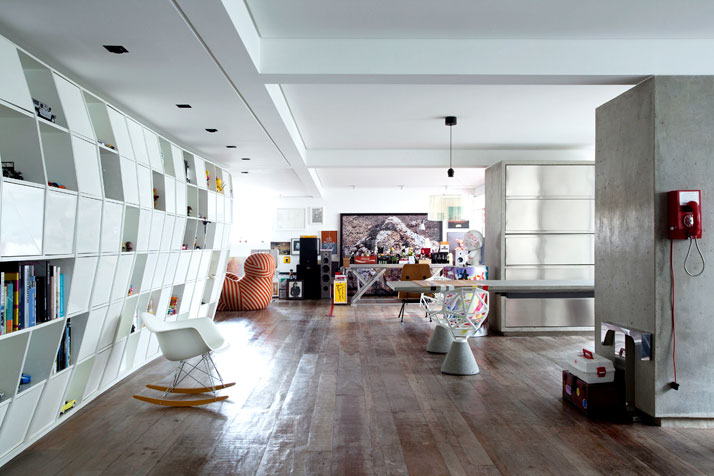
What happens when one of the best architecture bureaus of Brazil team up with one of the most famous art and design enthusiasts? Triptyque studio admit they were more than pleased when Houssein Jarouche called them to reform his 300m2 apartment, giving them total creative freedom. The whole reform took them only one year to be finished, reaffirming the fact that when similar philosophies meet everything is much easier. The result is one of the most fascinating houses we have seen, reflecting perfectly the essence of its owner, full of inspirational contrasts and unexpected surprises.
Houssein Jarouche, photo © Daigo Oliva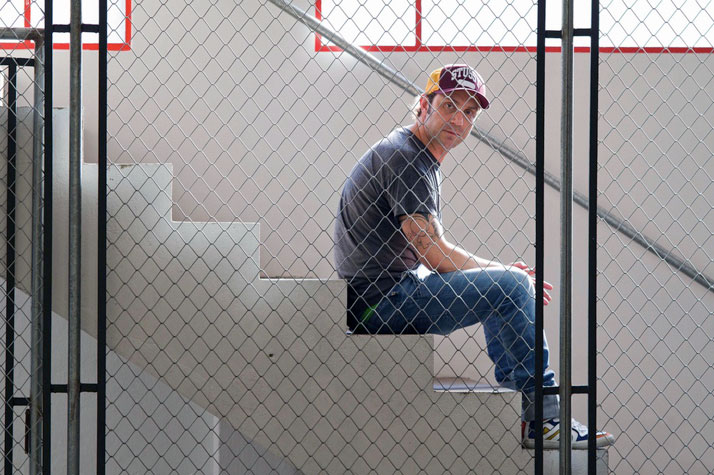
But how did it all begun? Houssein Jarouche tells us about it: “We met in 2004, when I chose Triptyque to design my new design store (MiCasa) in São Paulo. I was looking for a contemporary bureau since there are only a few of them in Brazil. Triptyque was the natural choice since they are certainly the best in the scene”. Let’s take a closer look and discover all the details… photo © Fran Parente
Leaf by Lievore Altherr Molina for Arper, photo © Fran Parente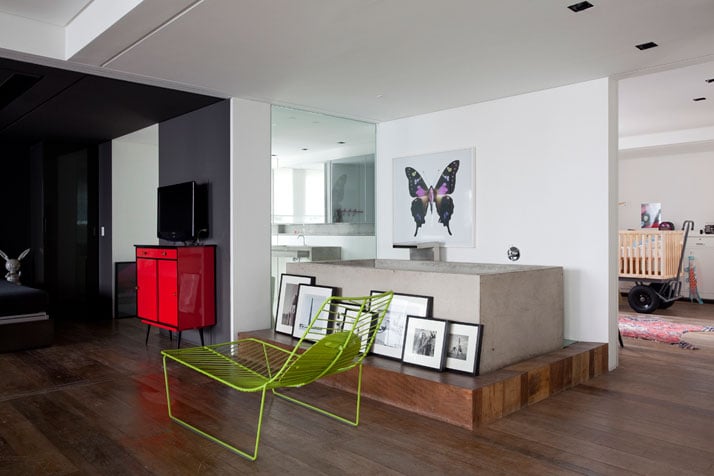
The 300 square feet apartment of proud owner Houssein Jarouche was planned as a great gallery with aligned rooms without an established function. The goal was to stimulate unexpected occupations and give a certain gratuité to the spaces. The main concept was to unify the space and divide it in smaller rooms. “The first step was to clear the space and observe the potentials. The second step was to establish a new hierarchy that privileges the continuity of spaces. The third, to search and create a language of our own”, say the Triptyques. photo © Fran Parente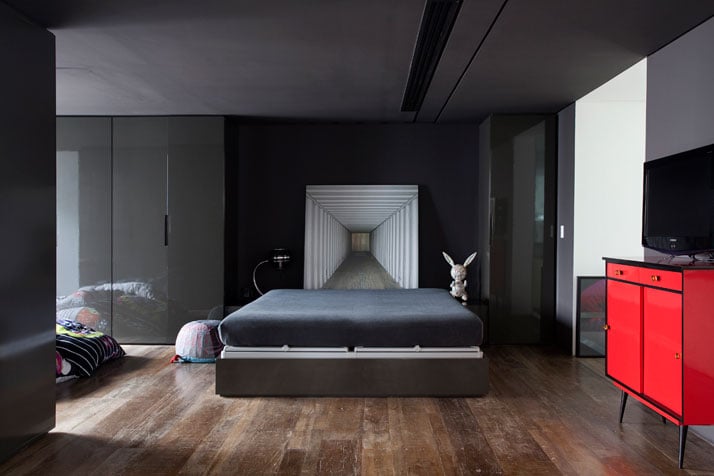
photo © Fran Parente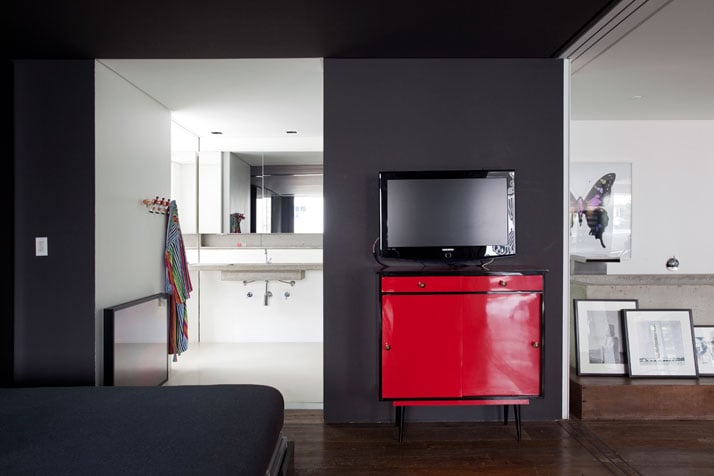
photo © Fran Parente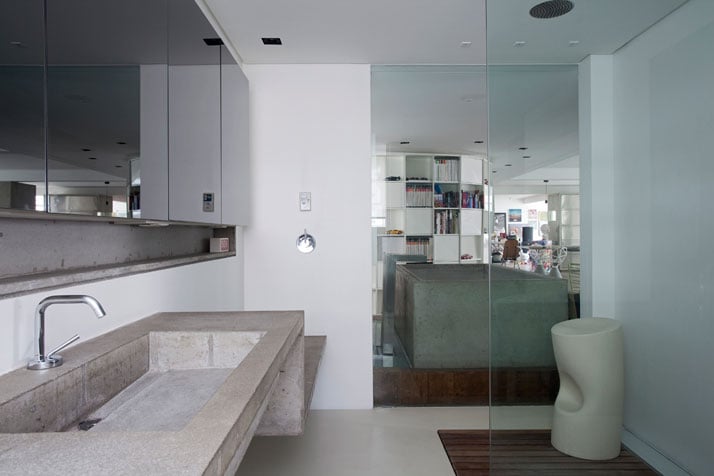
It was a goal for the architects to obtain this continuity without interfering in the richness of internal spaces. The apartment structure was opened to its maximum in order to clear the plan, where a dialogue between the bookcase, the kitchen and the galleries is set. Rough concrete, demolition wooden floors, stainless steel and white walls are the characteristic elements of this apartment, offering a minimal yet warm identity to the space. The art pieces and the furniture are given in this way enough space to obtain the essential visibility.
photo © Fran Parente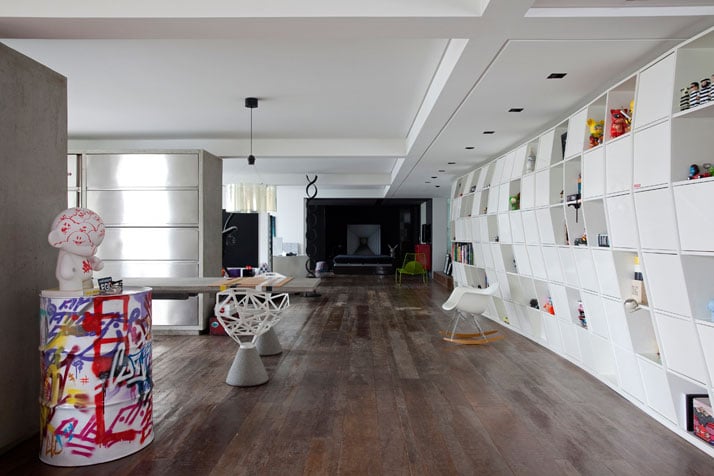
CHAIR ONE W with CONCRETE BASE designed by Konstantin Grcic for Magis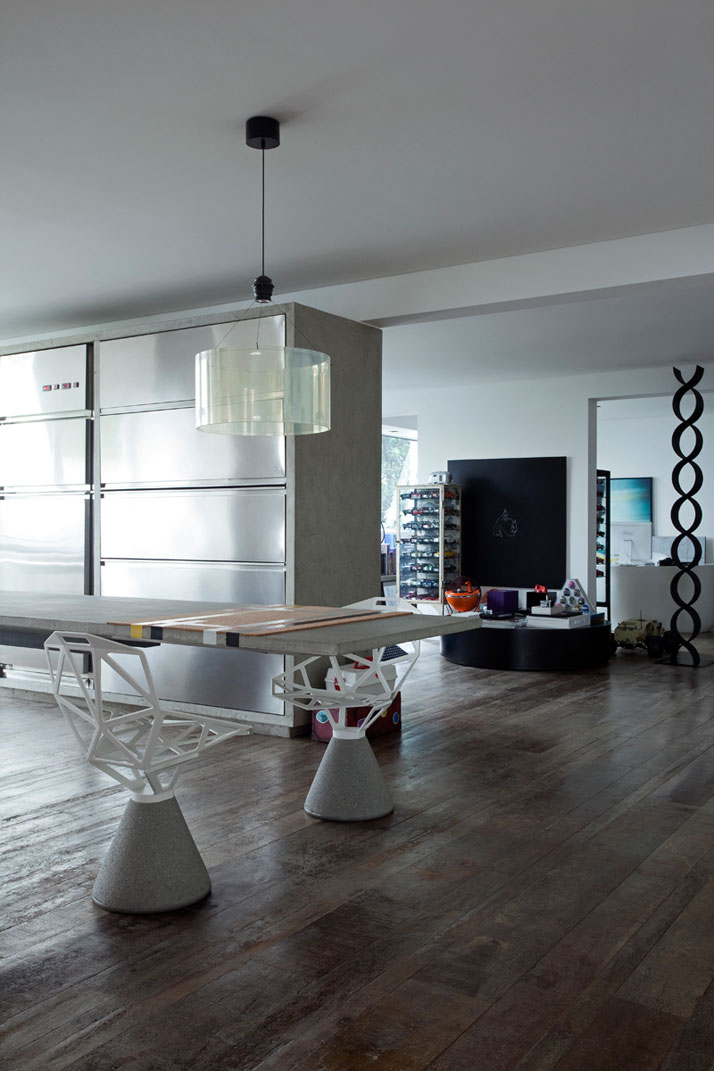
photo © Fran Parente
Triptyque team admits with a great enthusiasm the influence of Tropicalism to their project. After all, do not forget that we are in Brazil! The Triptyques quote Dominique Gonzalez-Foerster and her definition of the tropical identity like “something organic, intense, sensorial, vegetal, pulsating, immature and out of control” as their main inspiration. And YES, this apartment moves way beyond these words, full of inspirational juxtapositions and a difficult to tame personality.
photo © Fran Parente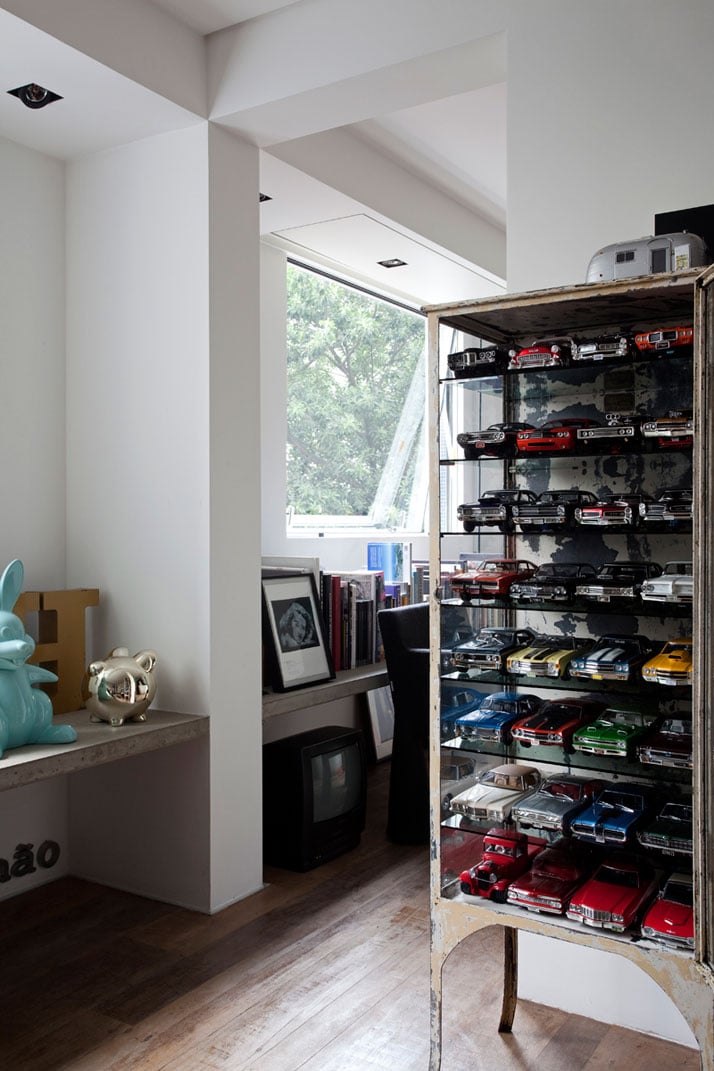
photo © Fran Parente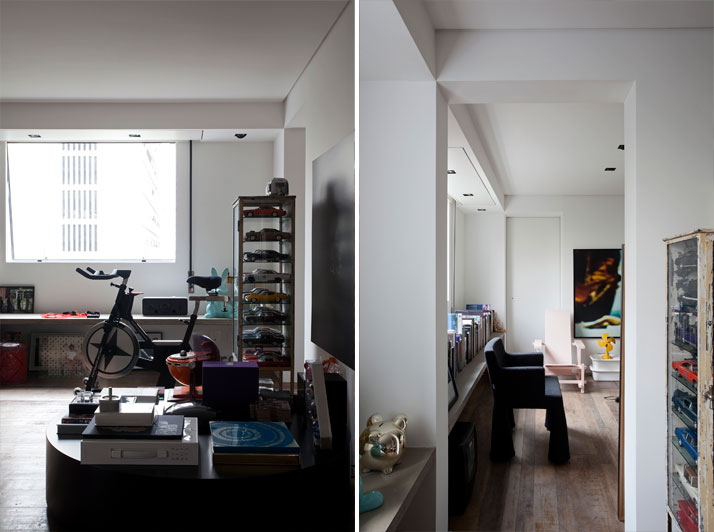
photo © Fran Parente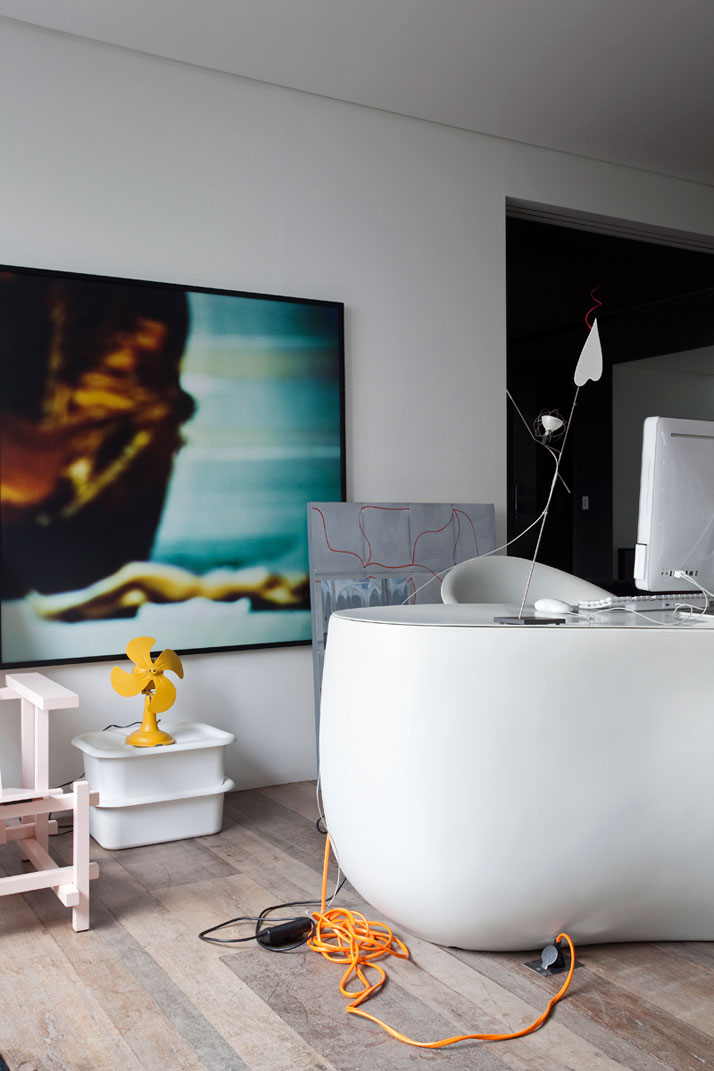
If there is something that captivates at first glance the attention in this house this is the bookcase, a monumental structure that embraces the technical core of the building (elevators and stairs). It is called Treme Treme and it is a special design by Triptyque. Treme Treme is present in every room and defines the whole project: through the bookcase it is made the entrance to the apartment, “like walking into a cave, through the dark towards the light” as the Triptyques say. It’s like a giant sculpture that sets the main tone to the apartment and at the same time it is the best display that the numerous collections of the owner could have.
photo © Fran Parente
photo © Fran Parente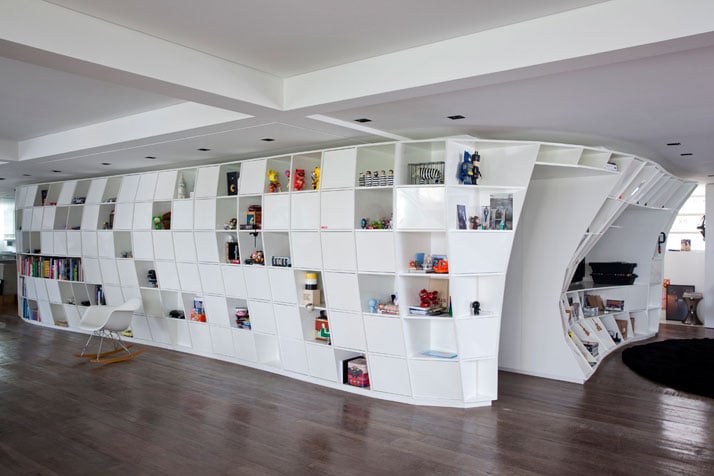
photo © Fran Parente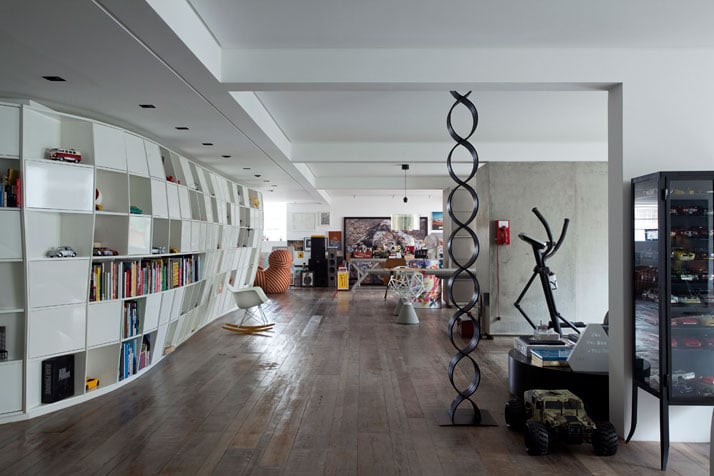
"Up5" armchair by Gaetano Pesce for B&B Italia, photo © Fran Parente
photo © Fran Parente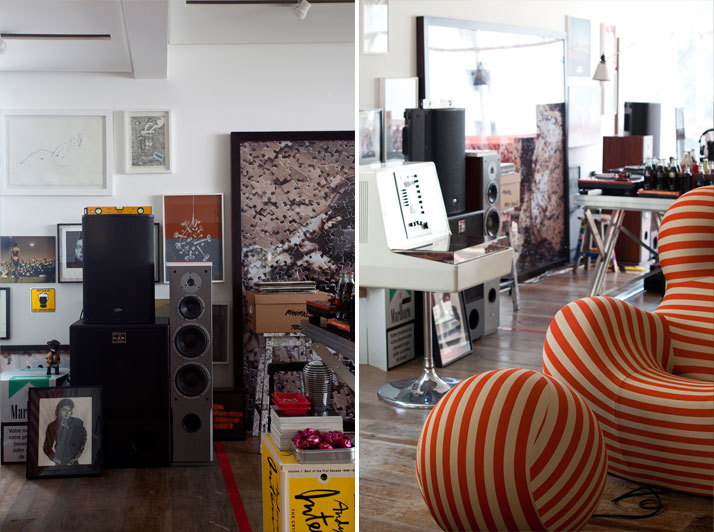
The kitchen is a great concrete stone that stands in the center of the project. As a reference meeting point, it is placed in a central position, in front of the bookcase. Triptyque are certainly not afraid of contrasts: in this house strong elements are confronted, resulting in a poetic conversation. The treated demolition wood and its irregular pieces juxtaposes with the white lacquered bookcase in a visual contrast between the artificial and the rough.
photo © Fran Parente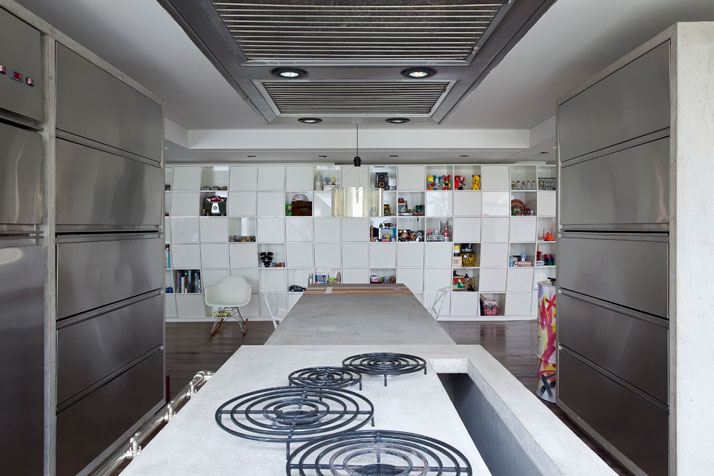
In the same way, the kitchen’s concrete dialogues with the stainless steel of the drawers and doors. This adds certain dynamism to the whole concept, giving the impression of an omnipresent movement. Surprisingly enough, the use of color that is added through the art pieces and the furniture is the unifying factor to all those contrasts: either making things look suave either imposing itself, it certainly makes the house look vivid and warm. Jarouche tells us about it: “These colors are a reflection of my personality. I collect objects I buy when I'm abroad, things from my childhood or gifts people give me, I love mixing them. I like keeping close everything that is important to me, this is my lifestyle.”
photo © Fran Parente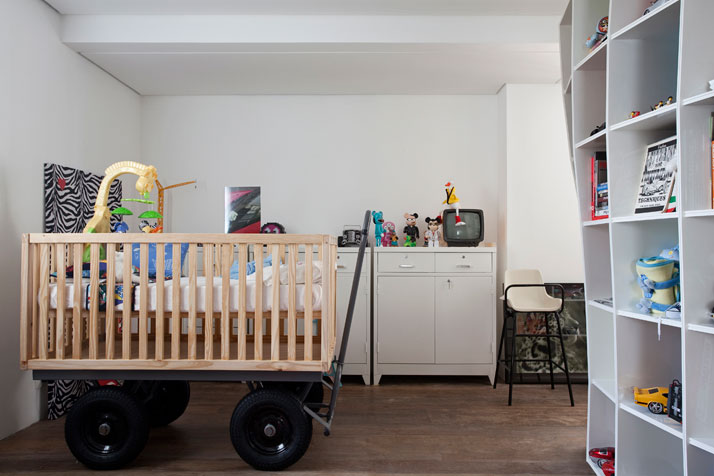
photo © Fran Parente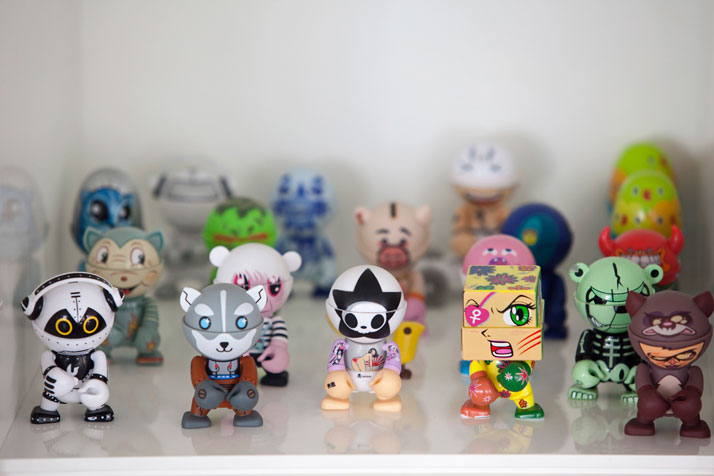
If every house is the reflection of its owner, then this one reflects Jarouche’s great passion for contemporary culture and a great fascination for collectionism as a way of understanding life. The carefree spirit of this house and the way the various objects are placed give the impression of being in the middle of a big party, full of inspiration and surprises. Kozik’s creations mix with Toy2r, Kidrobot and Play Imaginative art toys, advertising merchandise and special promotional items are combined with vintage treasures and art pieces are integrated in the most challenging way, looking at you from every angle. Even the furniture, with the signature of Patricia Urquiola, the Eames or Konstantin Grcic, fit perfectly in this particular universe. Jarouche has carefully chosen it from his proper shop, called MiCasa, one of the most famous design stores of Sao Paulo, distributing companies like Vitra, Driade, Moroso and Magis.
photo © Fran Parente
photo © Fran Parente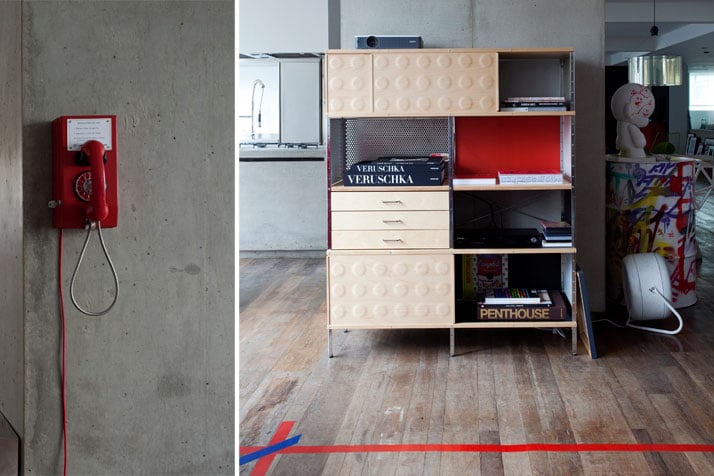
Jarouche admires deeply the work of artists like Fernanda Chieco, Erika Harrsch, Franz Weissmann, Felipe Cama, Camila Sposati or Roberto Wagner and his house is full of their pieces. Art for him is something very important and he has a very instinctive approach to it. “The truth is that at my place I do not combine art pieces with furniture or other objects. I'm not interested if they are good or bad or beautiful; they just have to mean something to me. So everything happens in a natural way” he explains. And what about his love for popular culture that is so imminent in this apartment? Jarouche tells us about it: “Pop art is a very democratic and playful way to be in touch with artistic production. For example, it's different from academic art which is much too serious. Pop art was present in my life in the 80's and 90's in a very intense way, so I have nice memories of it.”
photo © Fran Parente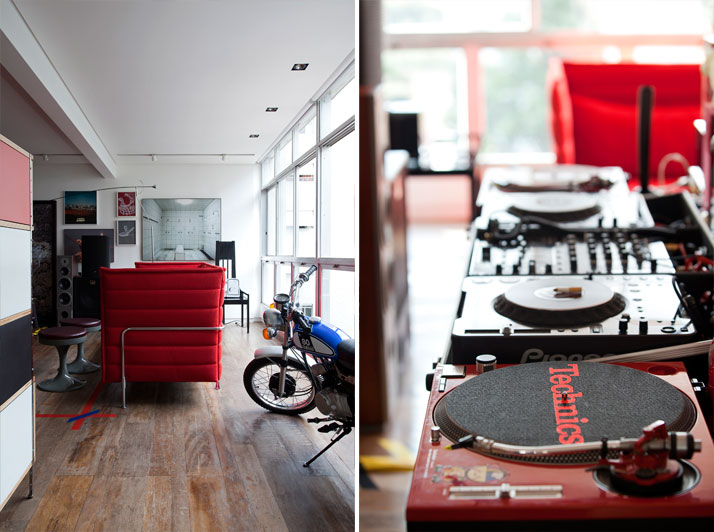
Houssein Jarouche’s apartment is the result of a gratifying coincidence between inspired architecture and bold interior design. Like a fascinating playground for art and design lovers, it offers a unique variety of points of view, sequences and accidents. Moving a step forward, we can say that this apartment reflects the universe of its owner in such a challenging way that it is the perfect extension of his personality. Imaginative and inspirational, full of Houssein’s obsessions, it certainly makes the difference in a world where safe solutions make us bored. After all, Brazil is all about passion, isn’t it? We really hope you felt it as much as we did!
Alcove Sofa by Ronan and Erwan Bouroullec for Vitra, photo © Fran Parente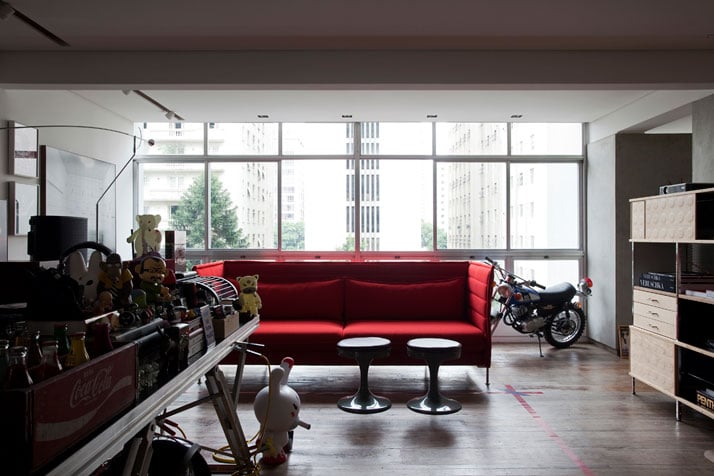
Project: Houssein Jarouche’s Apartment
Design Year: 2005
Conclusion Year: 2006
Area: 300 sq. meters
Architecture: Triptyque – (Greg Bousquet, Carolina Bueno, Guillaume Sibaud e Olivier Raffaelli)
Project Chief: Flavio Miranda
Lighting: Wall Lamps
Furniture: MiCasa
Flooring: Reclaimed wood - Espaço Santana
Photographer: Fran Parente



